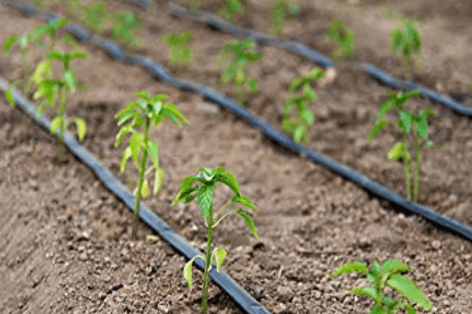Introduction:
Watering plays a vital role in maintaining healthy plants, but it can often be a time-consuming and inefficient process. However, with the advent of innovative irrigation systems, such as flat inline drip pipes, gardeners can now achieve precise and efficient watering with ease. In this article, we will explore the benefits and applications of flat inline drip pipes, revolutionizing the way we irrigate our gardens.
Understanding Flat Inline Drip Pipes:
Flat inline drip pipes, also known as flat dripline or flat emitters, are flexible and perforated tubes designed for targeted water delivery directly to plant roots. They consist of a flat strip with evenly spaced emitters that allow water to drip slowly and consistently along the entire length of the pipe. This uniform distribution of water ensures optimal hydration for plants while minimizing wastage.
Key Benefits of Flat Inline Drip Pipes:
Water Efficiency:
One of the primary advantages of flat inline drip pipes is their exceptional water efficiency. Unlike traditional sprinkler systems, which can result in water loss due to evaporation and overspray, drip pipes deliver water directly to the plant roots, minimizing wastage. This targeted approach significantly reduces water consumption, making drip irrigation an environmentally conscious choice.
Precision Irrigation:
Flat inline drip pipes provide precise and controlled watering, ensuring that plants receive the necessary amount of water without excess runoff. By delivering water directly to the root zone, these pipes reduce the risk of overwatering or underwatering, promoting healthy plant growth and minimizing the occurrence of water-related diseases.
Weed and Disease Control:
Traditional overhead watering methods can inadvertently promote weed growth and spread plant diseases. However, flat inline drip pipes minimize the water exposure to the soil surface, preventing weed seeds from germinating. Moreover, by avoiding wet foliage, these pipes minimize the risk of foliar diseases caused by prolonged moisture on plant leaves.
Versatility and Flexibility:
Flat inline drip pipes are highly versatile and can be used in various garden setups, including raised beds, vegetable gardens, flower borders, and even in container gardening. Their flexibility allows for easy installation around plants, regardless of their spacing or arrangement. Additionally, these pipes can be easily customized and cut to fit the specific needs of your garden.
Applications of Flat Inline Drip Pipes:
Raised Beds and Vegetable Gardens:
Flat inline drip pipes are particularly effective for raised beds and vegetable gardens, ensuring that plants receive consistent moisture directly at their roots. Lay the drip pipes along the rows or weave them between plants, adjusting the emitter spacing based on the water requirements of different crops.
Flower Borders and Landscape Plantings:
In flower borders and landscape plantings, flat inline drip pipes can provide efficient and discreet watering. Bury the pipes just below the soil surface, aligning them along the base of plants. This method delivers water precisely where it’s needed, promoting healthy root development and vibrant blooms.
Container Gardening:
For container gardening, flat inline drip pipes offer a practical solution for consistent watering. Place the pipes along the surface of the potting soil, ensuring that the emitters are positioned near the root zone of each plant. This irrigation method simplifies the task of watering multiple containers and minimizes the risk of overwatering or underwatering.
Greenhouse and Nursery Applications:
Flat inline drip pipes are also well-suited for greenhouse and nursery environments. They provide efficient irrigation for potted plants, seedlings, and young transplants. The controlled watering offered by these pipes promotes healthy growth and allows for easy adjustment of water delivery as plants develop.
Conclusion:
Flat inline drip pipes have transformed the way we irrigate our gardens, offering precise, efficient, and eco-friendly watering solutions. By providing targeted water delivery directly to plant roots.


